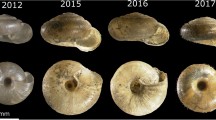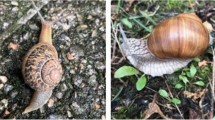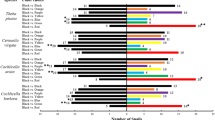Abstract
AT the beginning of July last year, I placed a couple of the Helix aspersa into a closed pot of earth immediately after copulation. They soon sealed themselves up, and so remained till the middle of May of this year, when it was discovered that of one of them that had died not a vestige was left except the empty shell. The other had shrunk to about a third its former bulk, but on being moistened and supplied with food, soon began to eat and to thrive. It had to trust largely to chance for its provender, but notwithstanding this, by the end of two months it was as big as its present quarters would allow it to be. The natural thing would have been to secrete more shell, for the animal was not full grown. Instead of this, however, it burrowed in the ground, and fell to laying eggs, the greater part of which have hatched out—a little colony of vigorous young snails. Had their parent been kept supplied with food and water after impregnation, they would, of course, have begun life a year ago. I wonder how high up in the animal scale such temporary suspension of the earliest stages of development is possible?
This is a preview of subscription content, access via your institution
Access options
Subscribe to this journal
Receive 51 print issues and online access
$199.00 per year
only $3.90 per issue
Buy this article
- Purchase on SpringerLink
- Instant access to full article PDF
Prices may be subject to local taxes which are calculated during checkout
Similar content being viewed by others
Author information
Authors and Affiliations
Rights and permissions
About this article
Cite this article
WARD, J. Vitality of the Common Snail. Nature 20, 363 (1879). https://doi.org/10.1038/020363c0
Issue date:
DOI: https://doi.org/10.1038/020363c0
This article is cited by
-
Cutaneous regulation of evaporative water loss in the common garden snailHelix aspersa
Die Naturwissenschaften (1965)



